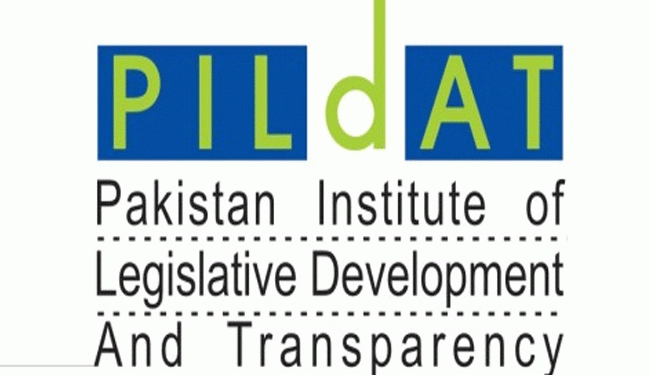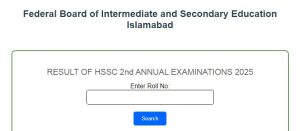Punjab has bagged highest Slscores in Rule of Law, Management of Economy and Service Delivery, while Khyber Pakhtunkhwa (KP) leads in Social Indicators and Administrative Effectiveness.
According to a press release issued by the Pakistan Institute of Legislative Development and Transparency (PILDAT) on Friday, quality of Governance in Pakistan’s provinces is, in general, improving.
Punjab leads with a score of 65.5% followed by Khyber Pakhtunkhwa (KP) with a score of 63.0%, Balochistan with a score of 60.5% and Sindh at 59.7% at the end of the third financial year of elected Provincial Governments in office since 2013.
Punjab had the highest scores of all the Provinces in 11 out of 25 parameters, while Balochistan had the highest scores of all the Provinces in seven parameters, KP in 6 parameters and Sindh in only one parameter.
Punjab leads the way in the Use of Technology for Better Governance with a score of 74.1 percent – way ahead of the other three provinces
Governance scores in Punjab and KP deteriorated in one parameter each, while governance scores in Balochistan and Sindh deteriorated in three parameters each compared to 2014-2015; additionally, one parameter in Sindh recorded no change in governance.
As per highest and lowest scored Governance Assessment Parameters for each province during the third year of governance (2015-2016), Punjab scored the highest in Transparency (79.4 percent) and the lowest in Management of Population Growth (47.8 percent) whereas KP scored the highest in Devolution of Powers to Local Governments (86.9 percent) and the lowest in Public Transport (40.9 percent).
Balochistan scored the highest in Anti-Corruption (73.8 percent) and the lowest in Poverty Alleviation (38.8 percent) and Sindh scored the highest in Merit-Based Recruitments (85.6 percent) and the lowest in Investment Friendliness (40.0 percent).
PILDAT’s Score Cards assessing the Quality of Governance are based on the change (marginal improvement, significant improvement, deterioration or no-change) in the quality of governance between the second (2014-2015) and the third (2015-2016) years of governance in the provinces.
The Assessment is based on 25 Governance Parameters under 5 Pillars of Governance including Rule of Law, Management of Economy, Social Indicators, Service Delivery and Administrative Effectiveness. Parameters garnering a score of 60% and above are indicative of a significant improvement in governance from 2014-2015 to 2015-2016
Provinces of Punjab and KP have received positive scores (i.e., above 50 percent) in all but one parameter each, while Balochistan has received positive scores in 22 out of 25 governance parameters. Sindh, consistently the last ranking province in quality of governance from 3 consecutive years, has received positive scores in 21 out of 25 parameters.
Punjab is the highest scorer among all Provinces in Transparency at 79.4 percent, while KP leads in Devolution of Powers to Local Governments at 86.9%. For the second year in a row, Gender Equality in Punjab and KP is among the lowest scoring parameters, at 54.7 percent in Punjab and 54.4 percent in KP.
Balochistan leads among all the Provinces in Anti-Corruption with the highest score of 73.8 percent owing to the improved performance of the Anti-Corruption Establishment in recovering embezzled funds and increasing convictions.
Balochistan’s lowest governance score has been recorded in Poverty Alleviation (38.8 percent), while Sindh has garnered the second highest score among all Provinces in this area at 74.4 percent. Governance in Sindh with regards to Investment Friendliness was recorded at its weakest with 40.0 percent score.
The comparative analysis on quality of governance across Pakistan’s Provinces is carried out by PILDAT since 2013 to highlight key areas of strengths and potential areas requiring improvement in the quality of governance. The rationale behind PILDAT’s initiative on Assessment of the Quality of Governance is that as democracy progresses in Pakistan, public focus should be on the performance of democracy, which is distinct from the process of democracy.
Through this Score Card, PILDAT seeks to understand the extent to which the democratic Governments have delivered to their citizens in terms of providing ‘Good Governance’. The initiative is by no means an exercise to criticize the performance of the elected Governments but is carried out as a collaborative effort through data received from governments to enable informed and fact-based assessments regarding quality of governance across Provinces.
In a continuation of the previous assessments, PILDAT’s indigenously developed scoring mechanism assigns on a scale of 1-5, based on the comparative performance of all provincial governments.
A government gets a score above 3 for a particular indicator if percentage change from financial year (i.e. July 1 to June 30) 2014-2015 to financial year 2015-2016 is more than the average percentage change across all provinces. A lower score is assigned for the inverse. The scores are based on both policy (25 percent weightage) and its implementation (75 percent weightage) across 25 areas of governance.
The data for the Provincial Score Cards was requested by PILDAT and was provided by the provincial governments. It was supplemented with published data. Several meetings were held with each government’s various departments during the process of this assessment. A draft of the analysis and score card was also shared with each government for feedback before final release.














